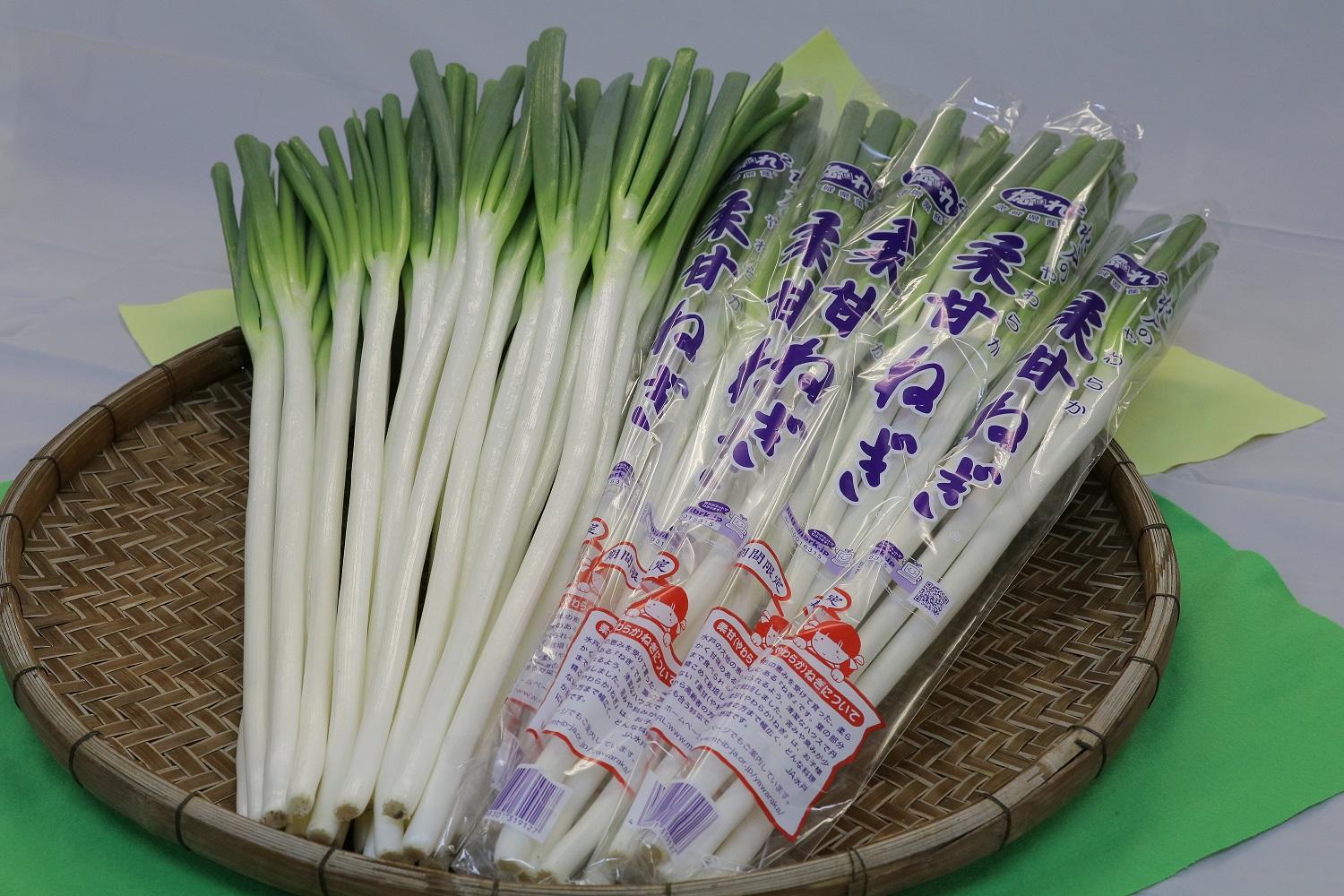Mito no Yawaraka Negi
| Registration Number | 59 |
|---|---|
| Name of the GI | Mito no Yawaraka Negi |
| Class | Vegetables/ Cereal grains/Pulses |
| Date of Protection | 2018/02/07 |
| Producing Area |
Ibaraki Prefecture
Mito City, Ibaraki Prefecture; Ibaraki Town and Shirosato Town, Higashi-Ibaragi County |
| Applicant - Name and Address | Mito Agricultural Cooperative, 2 -27 Akatsuka, Mito City, Ibaraki Prefecture |
The characteristic of "Mito no Yawaraka Negi" is their softness.
The white part of their stems is 1.3 to 1.6 times longer than that of ordinary nebuka-negi and they have weak tensile strength. Further, in comparison to ordinary green onions, they are characterized by their pleasant sweetness (high glucose levels) and weak pungency (low pyruvic acid levels).
These characteristics ensure that "Mito no Yawaraka Negi" are acclaimed as a product that is highly popular with consumers.
"Mito no Yawaraka Negi" is cultivated in plastic greenhouses in the production area.
In order to lengthen the white part of the stems of the green onions without bending them, producers cover the stems with shade film, rather than ridge up the earth around them. At harvest time, to ensure that the green onions do not break, producers carefully pull them out of the soil, peel off the outer skins and then pack only those whose white stalks are longer than 40 cm. After being quickly packed in functional bags designed to keep them fresh, they are shipped to market.
The production area, Mito City in Ibaraki Prefecture, covers both the alluvial lowlands of the Nakagawa River basin and tablelands on the Kanto Loam Formation (1). Both areas have sufficiently deep layers of soil to accommodate the long roots of "Mito no Yawaraka Negi". In addition, the production area has sufficiently long daylight hours, and is seldom afflicted by typhoon damage, thus it is suitable for intensively cultivating green onions etc. in greenhouses.
During the Edo Period, in the old Mito Domain (2), numerous books about food were written, including "Shokusairoku" (3). In these works, green onion, as well as garlic chives, Japanese leeks, garlic and ginger, drew attention, as they have been eaten in the vicinity of Mito since ancient times.
Since 1981, local producers have united to continue discovering better ways of cultivating high-quality nebuka-negi and established the production technology for "Mito no Yawaraka Negi".
Since a group of farmers growing "Mito no Yawaraka Negi" was establishment as sub-organization of the Mito Agricultural Cooperative in 1999, the cultivation of this variety of green onion has been promoted.
- Kanto Loam Formation: A layer of weathered, dark brown soil originating in the volcanic ash that covered the Kanto Plain during the Quaternary Period.
- Mito Domain: The territory in what is today central and northern Ibaragi Prefecture, that was governed during the Edo period by the successive heads of Mito Tokugawa family, including Tokugawa Mitsukuni (1628-1701) and Tokugawa Nariaki (1800-1860).
- Shokusairoku: A book written by Tokugawa Nariaki, the ninth head of Mito Tokugawa family, in the late Edo Period. It records the recipes used in his household.


